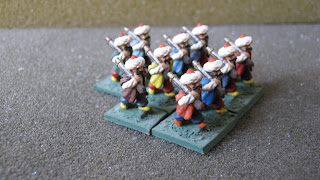Above: From the book's cover - "The Death of Giovanni de' Medici" (Hendrik Goltzius, Antwerp, 1583)
Arfaioli, Maurizio. The Black Bands of Giovanni: Infantry and Diplomacy during the Italian Wars (1526-1528). Pisa: Edizioni Plus-Pisa University Press, 2005.
I seem to have spent rather more time recently reading about the Great Italian Wars of the renaissance than I perhaps should have. In part, this is due to the happy discovery of Maurizio Arfaioli's book, which although I obtained it to learn something of the famous condottiere and his career, is actually more about (almost entirely) his famous Black Bands. You see, as the author notes, Giovanni as we have come to know him "probably never existed."
The true value of this work is its explication of the place and role of the native Italian infantry in the complex, ever-shifting tactical landscape of the Italian Wars. In that sense, it is a truly valuable (and I daresay remarkable) work. If the subject interests you, I urge you to buy it and read it. It may well change your views of warfare in the period.








